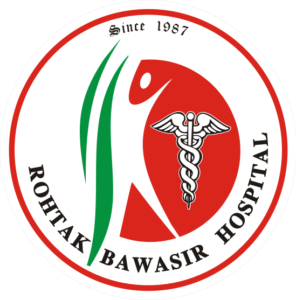Piles in Children: Causes, Symptoms, and Treatment Options


Updated on: 4th Jun 2024
Hemorrhoids, or piles, are enlarged veins in the lower rectum and anus that can be painful and uncomfortable. Although piles are typically associated with adults, they can occasionally affect youngsters as well. Parents and other caregivers must be aware of the causes, signs, and available treatments for piles in children in order to properly manage the problem.
Causes of Piles in Children

Piles in children can be caused by several factors, often related to diet, lifestyle, and underlying health conditions. Here are the most common causes:
Chronic Constipation: One of the leading causes of piles in children is chronic constipation. When a child experiences difficulty passing stools, they may strain excessively during bowel movements, leading to swollen veins in the rectum.
Poor Dietary Habits: A diet low in fiber and high in processed foods can lead to hard stools and constipation, increasing the risk of developing piles. Insufficient water intake can also contribute to the problem.
Genetic Predisposition: Children with a family history of piles may be more prone to developing the condition. Genetic factors can influence the elasticity of veins and the likelihood of swelling.
Prolonged Sitting: Sitting for extended periods, especially on the toilet, can increase pressure on the veins in the rectal area, leading to piles. This is particularly a risk for children who spend long hours playing video games or watching TV.
Obesity: Excess body weight can put additional pressure on the rectal veins, making obese children more susceptible to piles.
Straining During Bowel Movements: Even without constipation, some children may habitually strain during bowel movements, increasing the risk of developing piles.
Symptoms of Piles in Children

Recognizing the symptoms of piles in children is essential for early intervention. The symptoms can vary in severity, but the most common include:
Rectal Bleeding: One of the most noticeable symptoms is bright red blood on the toilet paper or in the stool. This bleeding is usually painless but can be alarming.
Itching and Irritation: Children with piles may experience itching and irritation around the anus, which can lead to discomfort and difficulty sitting or moving.
Pain or Discomfort: In some cases, children may feel pain or discomfort in the rectal area, especially during bowel movements. This pain can range from mild to severe.
Swelling Around the Anus: External piles may cause noticeable swelling or lumps around the anus, which can be tender to the touch.
Mucus Discharge: Some children may experience a mucus discharge from the anus, which can be accompanied by a feeling of incomplete bowel movement.
Fecal Incontinence: In severe cases, piles can lead to fecal incontinence, where the child is unable to control bowel movements.
Diagnosing Piles in Children

If a child exhibits symptoms of piles, it’s essential to seek medical advice. A pediatrician will typically start with a thorough medical history and physical examination. In some cases, further diagnostic tests may be required:
Digital Rectal Examination (DRE): The doctor may perform a DRE to feel for any abnormalities in the rectum.
Anoscopy: This procedure involves inserting a small, lighted tube into the anus to examine the internal hemorrhoids.
Colonoscopy: In rare cases, if there are concerns about other underlying conditions, a colonoscopy may be performed to get a comprehensive view of the colon and rectum.
Treatment Options for Piles in Children

Treatment for piles in children typically focuses on relieving symptoms and addressing the underlying causes. Here are the main treatment options:
Dietary Changes: Improving the child’s diet is often the first step in treating piles. Increasing fiber intake through fruits, vegetables, and whole grains can soften stools and reduce constipation. Ensuring the child drinks plenty of water is also crucial.
Regular Physical Activity: Encouraging regular exercise can help improve bowel function and reduce the risk of constipation. Even simple activities like walking or playing outside can make a difference.
Proper Toilet Habits: Teaching children not to strain during bowel movements and to avoid prolonged sitting on the toilet can prevent the worsening of piles. Regular and timed bathroom visits can help establish healthy bowel habits.
Topical Treatments: Over-the-counter creams and ointments specifically designed for children can help alleviate symptoms like itching and pain. However, these should only be used under the guidance of a healthcare provider.
Sitz Baths: Soaking the affected area in warm water for 10-15 minutes, several times a day, can provide relief from pain and itching. This simple treatment can be very effective for mild cases of piles.
Medications: In some cases, the doctor may prescribe medications to soften stools or reduce inflammation. Laxatives may be recommended for short-term use to ease constipation.
Minimally Invasive Procedures: If conservative treatments are ineffective, minimally invasive procedures such as rubber band ligation, sclerotherapy, or infrared coagulation may be considered. These procedures are generally safe and effective for treating severe piles in children.
Surgical Intervention: Surgery is rarely required for children but may be necessary in extreme cases where other treatments have failed. Hemorrhoidectomy, the surgical removal of piles, is typically reserved for severe or recurrent cases.
Preventing Piles in Children

Prevention is always better than cure, and there are several steps parents can take to reduce the risk of piles in children:
Encouraging a High-Fiber Diet: A diet rich in fruits, vegetables, and whole grains can prevent constipation and reduce the risk of piles. Parents should ensure that their children consume adequate fiber daily.
Promoting Hydration: Drinking plenty of water is essential for maintaining soft stools and preventing constipation. Encourage children to drink water regularly, especially during and after physical activity.
Establishing Regular Toilet Habits: Encourage children to use the toilet at regular intervals and not to ignore the urge to have a bowel movement. Timed bathroom visits after meals can help establish a routine.
Physical Activity: Regular exercise should be a part of a child’s daily routine to promote healthy digestion and prevent constipation.
Limiting Sedentary Activities: Reducing the time spent sitting, especially on the toilet, can help prevent the development of piles. Encourage children to take breaks and move around regularly.
Conclusion
Piles in children, while less common than in adults, can cause significant discomfort and distress. Understanding the causes, recognizing the symptoms, and seeking appropriate treatment are key to managing this condition effectively. With proper care, dietary adjustments, and lifestyle changes, most cases of piles in children can be successfully treated, leading to a full recovery and improved quality of life. If symptoms persist or worsen, it’s essential to consult a healthcare provider for further evaluation and treatment.
Meet Our Specialists

Dr. Raj Kumar Garg (B.A.M.S.)
40+ Years of Experience

Dr. Rahul Garg (B.A.M.S.)
15+ Years of Experience

